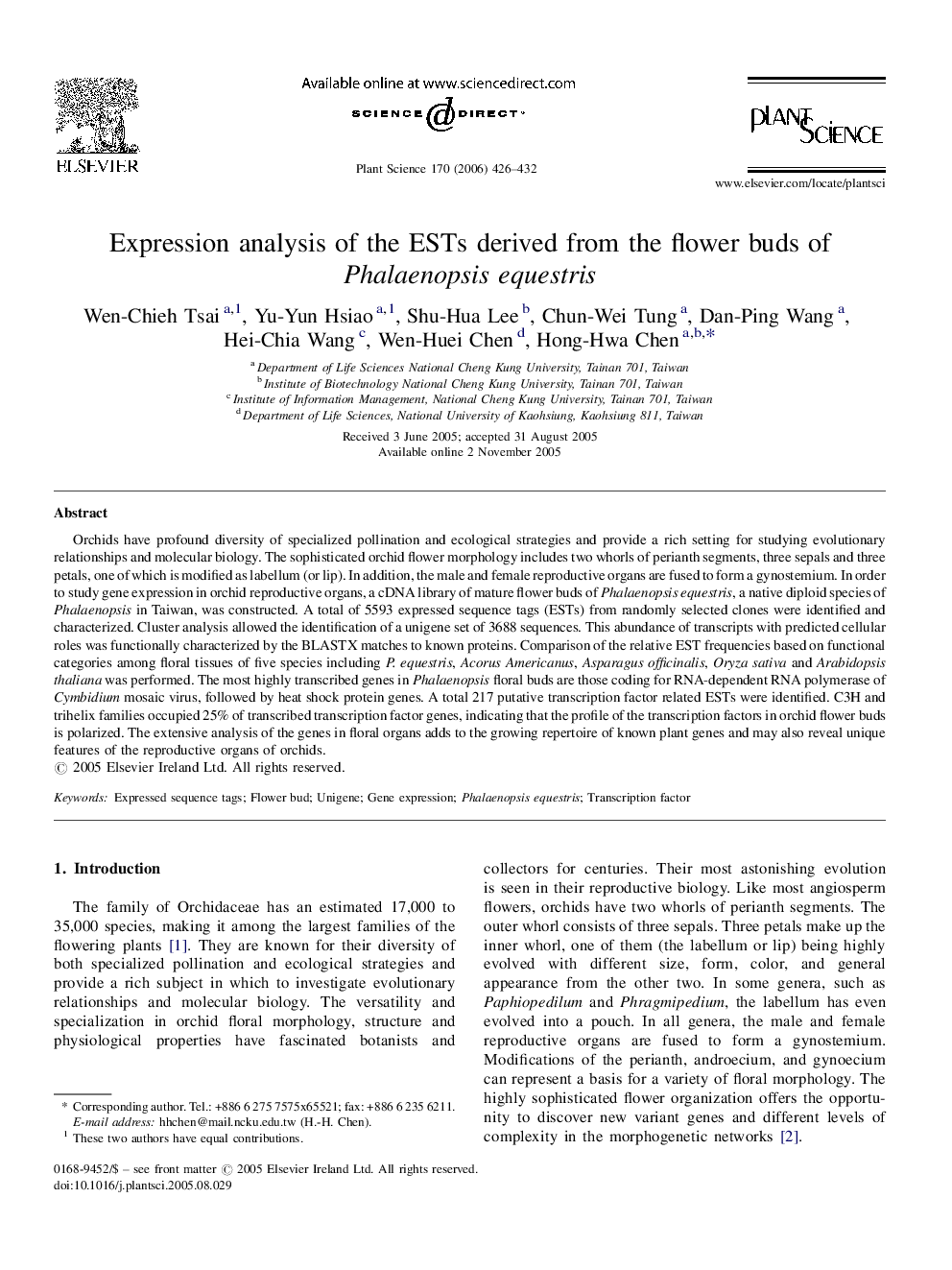| Article ID | Journal | Published Year | Pages | File Type |
|---|---|---|---|---|
| 2018853 | Plant Science | 2006 | 7 Pages |
Orchids have profound diversity of specialized pollination and ecological strategies and provide a rich setting for studying evolutionary relationships and molecular biology. The sophisticated orchid flower morphology includes two whorls of perianth segments, three sepals and three petals, one of which is modified as labellum (or lip). In addition, the male and female reproductive organs are fused to form a gynostemium. In order to study gene expression in orchid reproductive organs, a cDNA library of mature flower buds of Phalaenopsis equestris, a native diploid species of Phalaenopsis in Taiwan, was constructed. A total of 5593 expressed sequence tags (ESTs) from randomly selected clones were identified and characterized. Cluster analysis allowed the identification of a unigene set of 3688 sequences. This abundance of transcripts with predicted cellular roles was functionally characterized by the BLASTX matches to known proteins. Comparison of the relative EST frequencies based on functional categories among floral tissues of five species including P. equestris, Acorus Americanus, Asparagus officinalis, Oryza sativa and Arabidopsis thaliana was performed. The most highly transcribed genes in Phalaenopsis floral buds are those coding for RNA-dependent RNA polymerase of Cymbidium mosaic virus, followed by heat shock protein genes. A total 217 putative transcription factor related ESTs were identified. C3H and trihelix families occupied 25% of transcribed transcription factor genes, indicating that the profile of the transcription factors in orchid flower buds is polarized. The extensive analysis of the genes in floral organs adds to the growing repertoire of known plant genes and may also reveal unique features of the reproductive organs of orchids.
